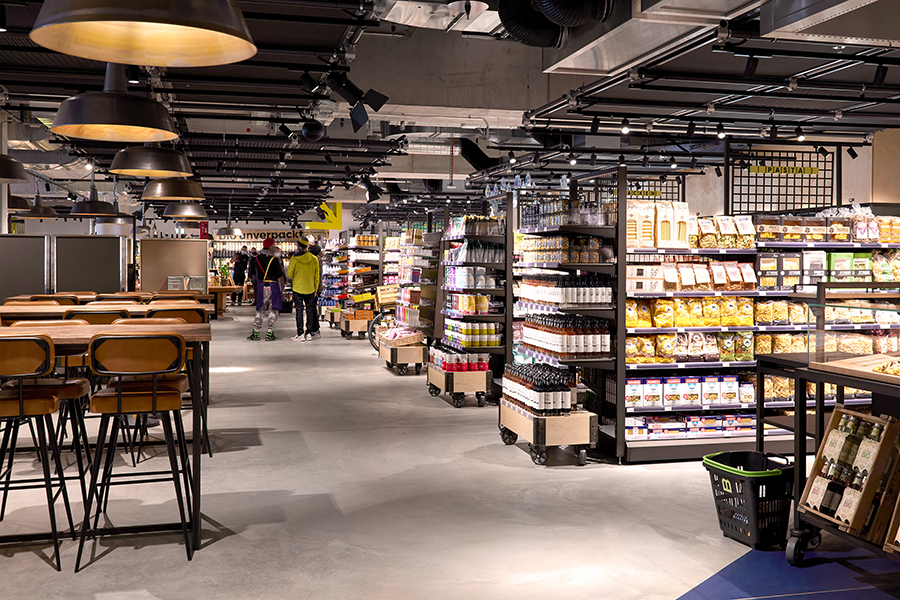
The retail landscape is evolving at an unprecedented pace where the roles, functionalities, and purpose of both retail titles (for personnel) and spaces are drastically changing. Aggressive digitization coupled with a global health crisis has accelerated all the transformations that were meant to gradually take over the space.
Elon Musk had once said, “Your will is the most accurate way to predict the future.” The quote holds true across industries and businesses, but especially for retail, as today it isn’t merely about following trends. Retailers are given the opportunity to experiment, innovate, and transform in order to front the retail revolution that is taking place today.
In order to do that, it is paramount to understand customer demands, cater to their needs and desires even before they realise it, and provide an experience that is convenient, seamless, and amazes them every step of the way. One such retailer that has been taking the lead in this respect is Migros, the largest retail company in Switzerland. Recently it announced the opening of its all-in-one fresh food market, BRIDGE, which has been conceived as the connector between a diverse fresh food market, an experiential dining avenue, and a venue for a wide range of events.
One of the key elements that brings Migros’ vision for a futuristic store to life is how the design promotes a smooth and easy functionality. Interstore | Schweitzer has created and implemented this 2000 m² concept revolving around one philosophy – flexibility.
“Migros wanted to create this space as a ‘forever prototype store’, where they see this place as an area to test and learn on an ongoing basis. It is a location that is there to inspire innovation and new thinking for their entire network of stores – almost like a testing ground for new ideas,” said Nathan Watts, Creative Director at Interstore.
The Flexstore helps to adapt the store layout as required and to quickly change modules, making it suitable for pop-ups, seasonal events as well as temporary leasing to external catering companies and producers. In order to achieve the flexibility and fluidity that the store was trying to accomplish, Interstore|Shweitzer had to totally rethink the approach to the overall layout and the execution of food service spaces.
Bridge claims to be the place to ‘meet food, meet market, meet people’, a customer experience that is more akin to a social marketplace than a conventional supermarket. “The key ambition for the space was to design something that was going to become a new meeting hub or a place to socialise around food. There is a heavy degree of integration of the dining and shopping areas of the space,” he added,
The upper floor contains the Food Lab, a room with flexible cooking modules that can be rented for private functions or company events, with or without a chef, and where cooking classes can be held. There is also a mobile stage where, in the near future, concerts and movie nights will take place. The entire food experience has been wrapped into an iconic space arrangement, featuring an eye-catching floating bridge that connects the main levels at the centre.
So how does the flexibility in design really translate into functionality in order to allow such drastic shifts and changes within the store?
For BRIDGE, apart from the permanent cooking stations, all other furnishing elements are 100% flexible. “Rather than having a permanent counter system everywhere, they have spaces for individual pop-ups. In a traditional food store, you usually have heavy counters drilled into the store with all the piping, data, and power coming in from underneath, creating a fixed set of counter systems that give a very rigid layout. We had to completely rethink that as it was a limitation to the ambition of the store. So we developed the flex store system in order for the place to be highly adaptable,” he said.
“What that really means is that all of the service is coming from the ceiling which effectively puts all the counters on wheels allowing us to move all the counters and space around. That innovation unleashed the possibility for the store to deliver what we were trying to achieve,” he added. The checkout systems too in the store are on wheels allowing for a versatile real estate space, which can be shifted and moved around.
Food experience and social dining as an integrated part of the grocery experience is a very compelling idea. Apart from that, the incorporation of technology within the stores – such as table ordering technology and scan-and-go – has unleashed the potential to elevate the overall food and grocery retail experiences.
Today the ability to be flexible is vital in a retail ecosystem, given that trends, customer behaviours, and general demands are rapidly changing. No one really knows what the future holds, although the idea of being able to predict and/or shape the future of an industry is rather enticing. However, allowing oneself to accommodate the unpredictable shifts by creating spaces and places for these changes will certainly contribute to the agility of the business in the long run.